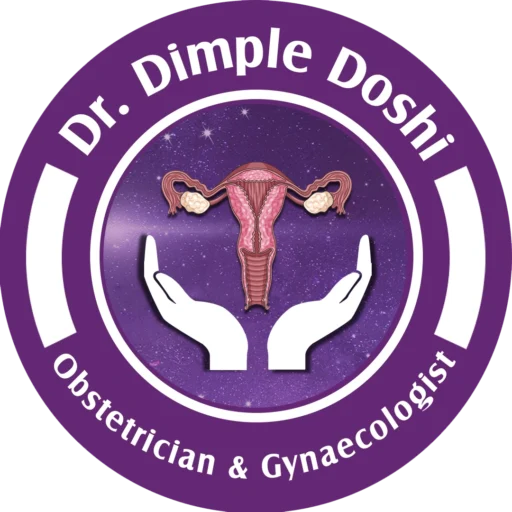Laparoscopic PCOS Surgery: Safe, Effective & Expert Care
Struggling with PCOS and Infertility? Laparoscopic Ovarian Drilling May Help
Are you battling irregular periods, hormonal imbalance, and infertility due to PCOS? Many women with polycystic ovary syndrome struggle to conceive because they don’t ovulate regularly. While hormonal treatments and fertility medicines often help, some women see no improvement—leaving them frustrated and emotionally drained.
Repeated failed treatments can feel exhausting, impacting confidence and delaying your dream of motherhood. The longer PCOS remains uncontrolled, the higher the risks of weight gain, diabetes, and endometrial issues—making timely, effective intervention crucial.
Solution:
Laparoscopic Ovarian Drilling (LOD) is a minimally invasive procedure that helps restore ovulation when medications fail. Using a laparoscope through a small incision, the surgeon makes tiny punctures in the ovaries with controlled thermal energy—reducing androgen production and improving fertility chances. At Vardaan Hospital, Dr. Dimple Doshi performs LOD using advanced 3D laparoscopic technology for maximum precision and faster recovery, helping women achieve natural conception safely.
Why Choose Laparoscopic Ovarian Drilling?
- Effective for women resistant to medication
- Minimal scarring and quick recovery
- Improves ovulation and natural pregnancy rates
- Safe and fertility-friendly approach
What Is Laparoscopic PCOS Treatment (Ovarian Drilling)?
Laparoscopic Ovarian Drilling (LOD), also called ovarian diathermy or laparoscopic ovarian cauterization, is a minimally invasive fertility surgery to restore ovulation in women with PCOS who don’t respond to medications.
- Uses laparoscopy to create small punctures or holes in the ovarian surface
- Improves ovulation, regulates menstrual cycles, and boosts fertility in drug-resistant PCOS cases
- Helps reduce excess male hormone (androgen) levels to control symptoms like acne and hirsutism
Synonyms: ovarian drilling procedure, laparoscopic ovarian surgery, PCOS surgical treatment, ovarian electrocautery, fertility laparoscopy.
Who Is an Ideal Candidate for Laparoscopic Ovarian Drilling?
LOD is recommended for women with PCOS who have infertility and failed medical treatment like Clomiphene or Letrozole therapy.
- BMI ideally below 30 kg/m²
- Pre-operative LH level >10 IU/L
- No severe coexisting conditions or contraindications
What Are the Indications for Laparoscopic Ovarian Drilling?
PCOS patients with anovulation and infertility who do not respond to oral ovulation-inducing medications are candidates for LOD.
- Clomiphene-resistant PCOS
- High LH and androgen levels
- Planning pregnancy with minimal medication
How Does Laparoscopic Ovarian Drilling Work?
LOD uses electrocautery or laser to make 2–4 small punctures on the ovaries, reducing androgen levels and restoring regular ovulation.
- Performed under general anesthesia
- Tiny cuts around the navel for laparoscope insertion
- Minimal scarring, same-day discharge
What Are the Benefits of Laparoscopic Ovarian Drilling?
LOD can improve fertility and hormonal balance in PCOS patients, especially those resistant to medicines.
- Restores menstrual cycles
- Improves chances of natural conception
- Reduces symptoms like acne and excessive hair growth
- Decreases androgen levels for better hormone balance
How Should You Prepare for Laparoscopic Ovarian Drilling?
Proper pre-op preparation ensures safety and smooth recovery after laparoscopic surgery.
- Blood tests: CBC, LFT, KFT, thyroid profile
- Fasting for 6–8 hours before surgery
- Stop hormonal and blood-thinning medications as advised
- Negative pregnancy test mandatory
- Bowel cleansing the night before surgery
What Happens During the Laparoscopic Ovarian Drilling Procedure?
The surgery takes about 20–30 minutes under general anesthesia with minimal incisions and quick recovery.
- Small incision near the navel for laparoscope
- CO₂ gas used to inflate the abdomen for better view
- 2–4 punctures made on ovaries using heat or laser
- Incisions closed with dissolvable stitches
What Is the Recovery and Discharge Timeline After LOD?
Recovery is quick; most women resume normal activities within a week after laparoscopic ovarian drilling.
- Start liquids after 6 hours, light diet the same day
- Discharge within 24 hours (daycare procedure)
- Avoid heavy lifting for 1 week
- Resume sexual activity after 10–14 days
What Are the Risks and Complications of Laparoscopic Ovarian Drilling?
While LOD is safe, some risks may occur, which experienced surgeons like Dr. Dimple Doshi minimize.
- Bleeding or infection
- Adhesion formation (scar tissue)
- Premature ovarian failure (rare)
- Injury to nearby organs (very rare)
Does Ovarian Drilling Improve Fertility and Ovulation?
Yes! Most women start ovulating naturally within 4–6 weeks of surgery, improving conception chances significantly.
- Ideal for medication-resistant PCOS patients
- Boosts ovulation and reduces need for high-dose fertility drugs
What Is the Cost of Laparoscopic Ovarian Drilling in Mumbai?
The cost varies based on room type and hospital facilities. At Vardaan Hospital, prices are transparent and affordable.
- Economy: ₹50,000
- Semi-Special: ₹68,000 – ₹75,000
- Deluxe: ₹1.2 lakh
- Super Deluxe: ₹1.5 lakh
- Suite: ₹2 lakh
Who Is the Best Doctor for Laparoscopic Ovarian Drilling in Mumbai?
Dr. Dimple Doshi, with 27+ years of expertise, is trusted for advanced PCOS surgery with high success rates and compassionate care.
Which Is the Best Hospital for PCOS Surgery in Mumbai?
Vardaan Hospital, Goregaon West, is a leading center for minimally invasive gynecological surgeries with advanced technology and NABH accreditation.
What Are the Medical Codes for Laparoscopic Ovarian Drilling?
ICD-10: E28.2 (PCOS) | CPT: 58661 – Laparoscopy, surgical; with removal of adnexal structure(s) or ovarian drilling.
FAQs on Laparoscopic Ovarian Drilling
Q1. Can laparoscopic surgery cure PCOS permanently?
Ans: Laparoscopic ovarian drilling helps improve ovulation, but PCOS cannot be completely cured. Lifestyle and hormonal balance remain important.Q2. Can I get pregnant after laparoscopic PCOS surgery?
Ans: Yes, many women experience improved ovulation and higher chances of pregnancy after LOD if other fertility factors are normal.Q3. What is the success rate of laparoscopic PCOS surgery?
Ans: Success rates vary between 50–80% for improved ovulation and conception, depending on patient profile.Q4. How long does it take to recover from laparoscopic PCOS surgery?
Ans: Recovery usually takes 5–7 days for normal activities and 2–3 weeks for complete healing.Q5. What is the cost of laparoscopic ovarian drilling in India?
Ans: Costs typically range from ₹35,000 to ₹80,000 depending on the hospital, surgeon, and complexity.Q6. Is laparoscopic ovarian drilling painful?
Ans: The procedure is done under anesthesia, so you won’t feel pain during surgery. Mild discomfort may occur during recovery.Q7. When will I ovulate after laparoscopic PCOS surgery?
Ans: Most women start ovulating within 4–6 weeks post-surgery, provided other factors are favorable.Q8. Who is an ideal candidate for laparoscopic PCOS surgery?
Ans: Women with PCOS who don’t respond to medications like Clomiphene or Letrozole may benefit from LOD.Q9. Are there any side effects of laparoscopic ovarian drilling?
Ans: Risks are minimal but may include infection, adhesion formation, or damage to ovarian reserve if overdone.Q10. Does ovarian drilling help reduce PCOS symptoms?
Ans: Yes, it lowers androgen levels and can help with acne, irregular periods, and ovulation issues.Q11. What is the fastest way to get rid of PCOS symptoms?
Ans: A combination of lifestyle changes, medications, and surgical options like ovarian drilling when indicated.Q12. Can ovarian cysts be removed during PCOS surgery?
Ans: Yes, if large cysts are present, your surgeon may remove them during laparoscopic surgery.Q13. How successful is IVF after PCOS surgery?
Ans: IVF success rates can improve after ovarian drilling as it restores hormonal balance and better egg response.Q14. Is ovarian drilling better than long-term medication for PCOS?
Ans: It is recommended for patients resistant to medication, but lifestyle and medication remain key post-surgery.Q15. Can PCOS surgery be repeated if symptoms return?
Ans: Repeat ovarian drilling is rarely done; doctors usually recommend other fertility treatments if symptoms persist.Take charge of your health today.
Book your consultation with Dr. Dimple Doshi at
Vardaan Hospital, Goregaon West, Mumbai.


 WhatsApp
WhatsApp +91-9820686823
+91-9820686823 Book Appointment
Book Appointment